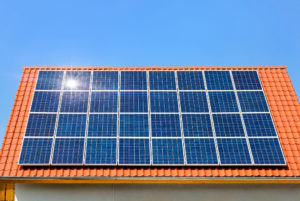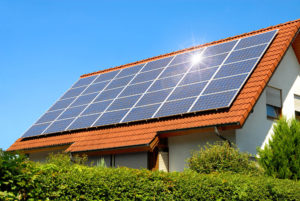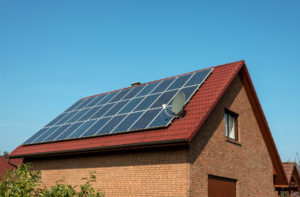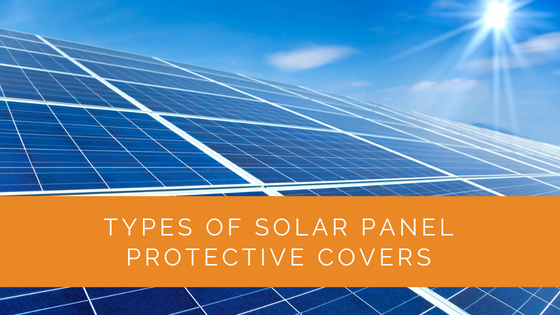As per research conducted by the Solar Technical Assistance Team (STAT), the productive life of a solar panel degrades at the rate of 0.5% every year.
However, this percentage could be higher in areas experiencing extreme temperatures. What is interesting to note is that you can slow down this degradation rate by protecting your solar panels well.
Not familiar with that term? If you were under the impression that a low-maintenance solar panel system can be left on its own, it cannot. Though these systems need little scrutiny, there are ways you can extend their life. Thankfully, that way is not through surveillance or hefty maintenance work but a simple panel protective covering.
So, what is solar panel covering all about? Read more to find out.
Contents
- 1 Key Takeaways
- 2 Solar Panel Protective Covers and Their Necessity
- 3 Protection Offered by Solar Panel Covers
- 4 When to Use Solar Panel Protective Covers
- 5 When Not to Use Solar Panel Protective Covers
- 6 Solar Panel Cover Impact Calculator
- 7 Types of Solar Panel Protective Covers
- 8 Functionality of Solar Panels When Covered
- 9 Mistakes to Avoid with Your Solar Panel Covers
- 10 Expert Insights From Our Solar Panel Installers About Types of Solar Panel Protective Covers
- 11 Case Study: Enhancing Solar Panel Longevity with Protective Covers
- 12 Experience Solar Excellence with Us!
- 13 Be Proactive, Not Reactive!
Key Takeaways
- Solar panel protective covers are essential for prolonging the lifespan of solar panels and safeguarding them against damage caused by hail, rainstorms, dust, and soot.
- Protective covers should be used during extended periods of non-use or in areas with extreme temperatures to prevent overheating and temperature-related efficiency loss.
- The type of protective cover used can impact the solar panel’s efficiency, with grid or mesh covers allowing continued energy absorption. In contrast, manufacturer-created covers may reduce or prevent absorption, especially for thin-film panels.
Solar Panel Protective Covers and Their Necessity
Like your electronic devices, such as laptops, smartphones, etc., that require a cover or sleeve to protect them and maintain their longevity, a solar panel system also needs a protection cover.
Under normal circumstances, when the weather outside is nothing suspicious, and you wish to use your solar panels as usual, you need not cover them. Solar panel covers need not be worn over the panels every night.
However, if you’re going for an extended vacation and will not use the solar panels, you should ideally cover them. This is also important because weather conditions can change anytime.
The cover will protect solar panels from hail, excessive rain, dust, etc.

Protection Offered by Solar Panel Covers
As mentioned above, solar panel covers protect against different weather conditions. Let’s discuss each in a bit more detail –
Hail
Hail is much more damaging than snow because it is solid and hard ice. Now, if it were just hailstones falling on your solar panel system, it would not be a matter of much concern.
However, what is truly detrimental is the speed at which hailstones fall, which can sometimes be as fast as 10 miles per hour! With such speed, hailstorms can easily cause solar panels physical damage or reduce their efficiency.
Plus, a lot of solar panel warranties do not cover hailstorms. Though modern technology has enabled the production of solar panels that resist severe hailstorms, it is always better to be safe than sorry. So, protect your solar panels with a cover.
Rainstorms
The answer is a resounding yes if you wonder whether solar panels function under rainy climatic conditions. However, ensuring high performance may be challenging. This is mainly due to two reasons – if the rainstorm is accompanied by thunder and lightning (most of them are), the solar panel’s ability to convert energy into electricity is hampered.
Secondly, all solar panels, monocrystalline, polycrystalline, or thin film, contain solar cells enclosed within a protective glass covering. The rainwater may seep into this covering and damage it.
The panels’ efficiency will diminish if it reaches the solar cells responsible for converting solar energy into a directional current. A protective covering protects against such damages.
Dust/Soot
Finally, this one is often given little to no notice – solar panel performance will be significantly impacted by soot, dust, or grime. Though solar companies manufacture panels with dust-resistant properties, it is natural for them to undergo wear and tear sitting on the roof space of your property.
Several studies have shown that the accumulation of soot, dust, and such tiny particles can affect solar panel performance by a whopping 50%! And if electrical input is reduced by half, your energy bills will increase 2X.
Instead of putting yourself through such hassles, you can protect your solar panels using a reliable covering.

When to Use Solar Panel Protective Covers
Yes, you need to cover your solar panels when not in use for extended periods and just in case harsh weather strikes. However, are there reasons or occasions you should use solar panel covers even when in use? Well, at least two, and they are listed below –
For Protection from Overheating
Seasoned solar panel system users know its ins and outs. This generally means they know all about installing solar panels, wires, connectors, and cables. Plus, you need not use a panel cover if your area does not experience unbearably high temperatures.
However, if you’re new to the game and living in hot and humid conditions, shielding your solar panels with a covering is best. This will prevent overheating issues and grant you peace of mind so you won’t be caught off-guard in an unpleasant situation.
Extremes of Temperature
Many people cover their solar panels full-time if they live in regions that experience temperature extremes throughout the year. This can also be the case if the area experiences highly unpredictable weather conditions.
Doing so may extend the life of the solar panels. This holds mainly because each kind of solar panel has a different temperature coefficient, which is the amount of power they lose with every degree of rise in temperature.

When Not to Use Solar Panel Protective Covers
While many advocates support solar system covers, others believe discretion should be practiced. There are circumstances or times when covering is redundant or injurious.
Since solar panels are meant to be exposed to the environment, most companies ensure a robust manufacturing process that makes the panels resistant to weather elements. Plus, the panels are often low-maintenance, so cleaning and repair work should be minimal.
As for rain, some of it is good as it may enhance performance by removing dirt build-up. Finally, dirt and grime are not threats unless in large volumes, so a solar cover is not required if windy dust storms are not around the corner. Since wisdom is justified by her children, to cover or not to cover is a matter of circumstance and context.
Solar Panel Cover Impact Calculator
Estimate how much efficiency your solar panels could lose without protection.
Estimates are approximate. Actual efficiency depends on location, installation, and panel type.
Types of Solar Panel Protective Covers
Solar panel covers vary in materials as one can use them for different reasons. For instance – a cover designed to protect against rain and hail will differ from the mesh-like cover intended to keep pestering birds at bay.
Again, solar panels are generally available in different sizes and types. This is another reason why covers cannot be one-size-fits-all. They can be developed from homemade boards, commercially supplied covers, or tarps.
So, to understand how solar panel cover types may vary, let us know more about the different types of solar panels.
Monocrystalline solar panels
Usually fixed and cylindrical, monocrystalline solar panels are made from a single silicon crystal. As a result, its purity level is high. The single cylindrical ingot is then sliced into wafer-like solar cells.
Being carved from a single silicon ingot, these solar panels have a high power capacity. They offer greater energy efficiency and can last up to 30 years.
Polycrystalline solar panels
These solar panels are at the opposite end of the spectrum from monocrystalline panels. They are carved from separate silicon ingots. These also have a definite shape, which is usually a square.
Creating these solar panels involves melting the silicon crystals and pouring the molten mixture into a square mold. The process compromises solar power, so polycrystalline panels are less energy-efficient than monocrystalline.
Thin Film Solar Panels
These panels are the most affordable of the lot and are created by depositing thin films of semiconductors onto substrates such as metal, glass, or plastic. Though usually rectangular, the amorphous silicon thin-film panel usually has no definitive shape.
As a result, the cover for such panels needs to be custom-developed. Plus, these panels have the lowest power capacity and, thus, carbon footprint.
Both polycrystalline and thin film solar panels are more affordable than monocrystalline, but the former two sacrifice energy efficiency.

Functionality of Solar Panels When Covered
Many new solar panel users have this question – whether or not the solar panel will continue to work under a protective covering. The answer to this question depends upon the type of protective cover used.
How? For instance – If your solar panel is covered using a grid or mesh cover (usually used to keep birds and other pests out), it will continue to absorb the sun’s energy. However, if the protective covering you use is a headboard or a manufacturer-created cover, the same will cover the solar panel entirely.
It will either reduce the absorption efficiency of the panel or downright prevent it from absorbing the sun’s rays. This is especially true in the case of thin film panels that are already not as efficient as monocrystalline or polycrystalline.
Mistakes to Avoid with Your Solar Panel Covers
Though some on this list may sound cliché, addressing common mistakes people make with solar panel covers that cost later on is still important.
- Don’t be hasty about a solar panel manufacturer or supplier. This is because a top-notch supplier will design the panel, which is mostly resistant to weather elements. That’s double protection, in a sense!
- Many people try to DIY their solar panel covers to save money. While homemade headboards can help, they are not always efficient. Expert manufacturers know which areas must be handled to design a custom and high-performing cover. Look at it as an investment, not an expense!
- One can see solar panels sleeping in many homes or vehicles. Avoid this – ideally, solar panels should be tilted or slightly slanted. This allows them to absorb more solar energy and makes dirt, debris, leaves, etc., easily slide off the panels.
Expert Insights From Our Solar Panel Installers About Types of Solar Panel Protective Covers
Using protective covers during extreme weather conditions can significantly reduce the degradation rate of solar panels, ensuring they remain efficient over the years.
Senior Solar Technician
Selecting the right type of cover is essential. While mesh covers allow for continued energy absorption, solid covers should be used during extended periods of non-use to protect against hail and heavy rain.
Lead Solar Installer
Regular maintenance and the use of appropriate covers can prevent issues like dust accumulation and overheating, which can negatively impact your solar panel’s performance.
Certified Solar Engineer
Case Study: Enhancing Solar Panel Longevity with Protective Covers
Background
At Solar Panels Network USA, we aim to provide comprehensive solutions that enhance the efficiency and lifespan of our clients’ solar panels. One of our recent projects involved the strategic use of solar panel protective covers to mitigate the effects of extreme weather and environmental factors. This case study explores the different types of covers used and their impact on solar panel performance.
Project Overview
A residential client in an area prone to hailstorms and high temperatures approached us to find ways to protect their solar panel system. The goal was to minimize damage and degradation while maintaining optimal energy production. Our task was to recommend and implement suitable protective covers for their solar panels.
Implementation
Understanding Protective Covers:
We began by educating the client on the necessity of protective covers and their benefits. Solar panel covers help protect against various environmental factors such as hail, rainstorms, dust, and extreme temperatures. Proper use of these covers can significantly extend the life of the panels.
Types of Solar Panel Protective Covers:
We evaluated and recommended different types of covers based on the client’s needs:
- Grid or Mesh Covers: These covers allow solar panels to continue absorbing sunlight while protecting them from birds and large debris.
- Solid Covers: Ideal for protecting panels during hailstorms and extended periods of non-use. These covers are designed to prevent physical damage and minimize efficiency loss due to dust and debris accumulation.
Installation Process:
Assessing the Environment: We assessed the local weather patterns and environmental conditions to determine the most suitable cover types. Given the frequent hailstorms and high temperatures, a combination of solid and mesh covers was recommended.
Customizing Covers: The covers were customized to fit the client’s specific solar panel dimensions and types, including monocrystalline panels known for their high efficiency and durability.
Installation and Training: Our team installed the covers, ensuring they were easy to remove and replace. We also provided the client with training on when and how to use the covers effectively.
Monitoring and Maintenance:
To ensure ongoing protection and optimal performance, we set up a monitoring schedule:
- Regular Inspections: Conducted to check for any damage or wear and tear on the covers.
- Cleaning Routine: Established to prevent dust and grime buildup, which can impact energy absorption.
Results
The implementation of protective covers resulted in a noticeable improvement in the longevity and efficiency of the client’s solar panel system. Despite severe weather conditions, the panels remained undamaged, and their performance remained consistent. The client reported reduced maintenance costs and higher energy production stability.
Summary
Using protective covers for solar panels is a proactive approach to mitigating environmental damage and extending the system’s lifespan. At Solar Panels Network USA, we provide tailored solutions that consider local conditions and specific panel types. This case study demonstrates the importance of choosing the right cover and maintaining regular care to ensure optimal solar panel performance.
By leveraging protective covers, clients can safeguard their investment, reduce maintenance costs, and enjoy reliable energy production for years to come.
Experience Solar Excellence with Us!
Trust in Solar Panels Network USA, where our seasoned experts deliver top-quality solar solutions for homes and businesses nationwide. With a legacy of countless successful installations and a commitment to sustainable energy, we’re your reliable partner in the solar journey. Ready for a brighter, eco-friendly future? Call us now at (855) 427-0058 and harness the sun’s power!
Be Proactive, Not Reactive!
Whether or not you use solar panel covers for your solar panels is entirely a personal choice. As stated earlier, in certain circumstances, you don’t need a solar cover; in others, you may require one.
You can also take the alternative route by installing a panel monitoring system to check its performance, getting the panels insured, etc. In any case, what is most important is that you take proactive steps to protect your solar panels.
Being proactive instead of reactive will ensure that your panels last you a long, long time!
About the Author
Solar Panels Network USA stands at the forefront of solar energy solutions, driven by a team of seasoned solar engineers and energy consultants. With over decades of experience in delivering high-quality solar installations and maintenance, we are committed to promoting sustainable energy through customer-centric, tailored solutions. Our articles reflect this commitment, crafted collaboratively by experts to provide accurate, up-to-date insights into solar technology, ensuring our readers are well-informed and empowered in their solar energy decisions.

